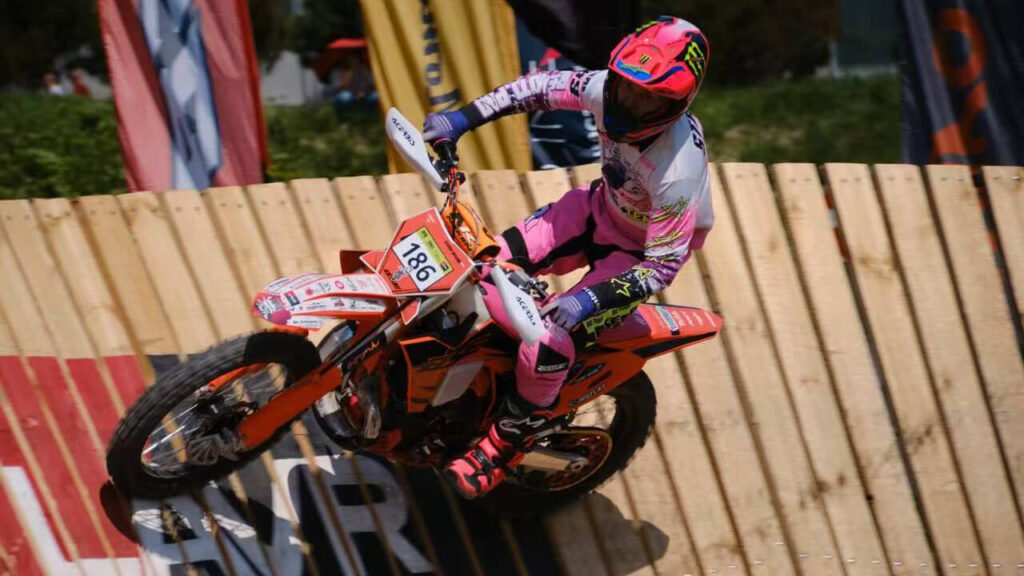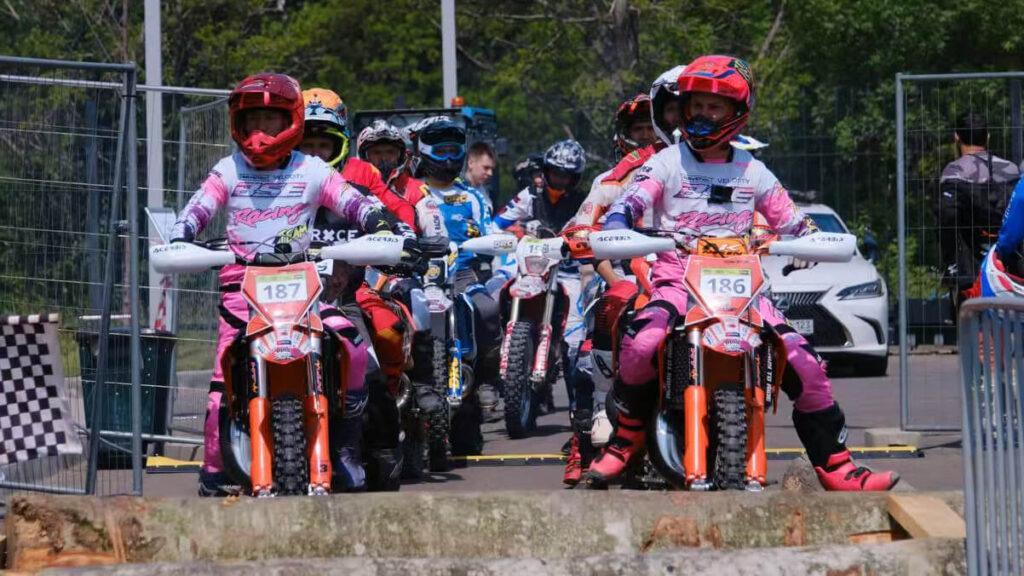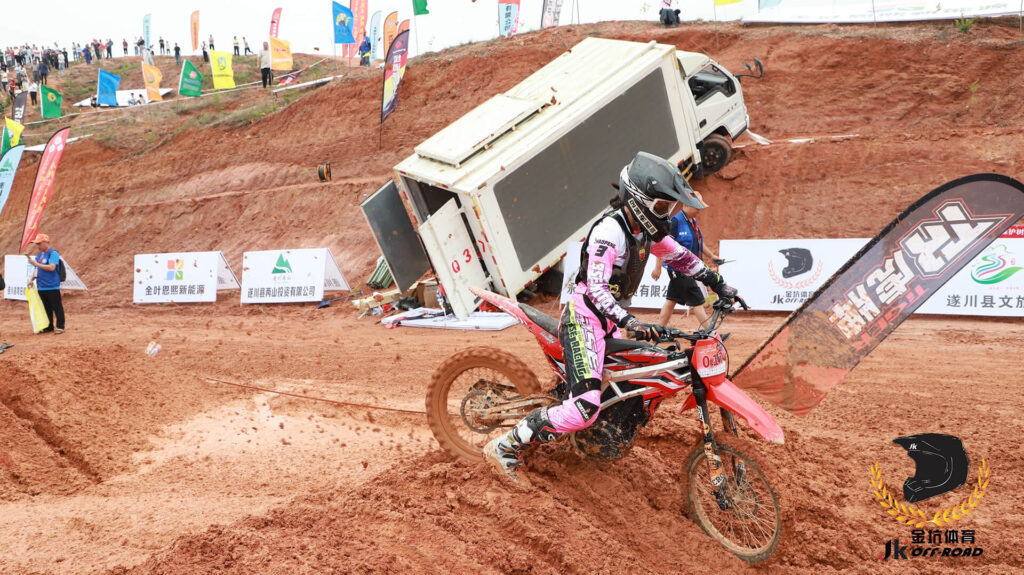One of the most common questions that confuses new riders and bike retailers alike is: What exactly is a pit bike, and what is the difference between pit bikes and dirt bikes? While they may seem similar at first glance, they differ in design, purpose, and performance. Knowing the difference is crucial, whether you’re a rider or a brand looking to source or sell the right models.
This article breaks down everything you need to know about pit bikes versus dirt bikes, complete with a comprehensive comparison table and buying advice.

Table of Contents
ToggleWhat Is a Pit Bike? Understanding These Tiny but Mighty Vehicles
Pit bikes were small motorcycles used by mechanics to travel around the pits of motocross tracks in the 1960s. These compact bikes allowed riders, mechanics, and team members to get around the pits quickly and easily without using full-size motorcycles. Due to their compact size, lightweight construction, and affordability, they’ve now transitioned into recreational and competitive machines themselves. Think of pit bikes as the chihuahuas of the off-road world—small, energetic, and easy to manage. Their compact size and low seat height make them ideal for younger or less experienced riders who want to hop on without needing to climb up.
The horizontal pit bike engine placement helps maintain a lower center of gravity, making them easier to balance and handle. These bikes are perfect for tight spaces like race pits or backyard tracks, and they’re a popular choice for stunts, small jumps, and even indoor motocross.
They have the following features:
- Small engines, ranging from 50cc to 150cc
- Smaller frame and seat height (often around 26–30 inches)
- Four-stroke engines, typically air-cooled
- Lower ground clearance than full-size dirt bikes
- Manual or semi-automatic transmissions
- Lightweight construction (often under 150 lbs)
Pit bikes are often used by beginner and young riders recreationally, in casual trail riding and stunt practice, since they’re affordable and easy to maneuver. Their use is not limited to recreation—they’re used competitively too, in youth motocross and indoor motocross.
What Are Dirt Bikes?
Dirt bikes are the original bikes designed for off-road riding across rugged terrain such as dirt trails, hills, sand dunes, and forests. They are built for rough terrains and more demanding rides. They are bigger and designed for tackling challenging environments. If pit bikes are like chihuahuas, dirt bikes are the German shepherds of the riding world—bigger, tougher, and built for power and performance. These machines are made for rugged terrains, with higher ground clearance, a taller seat height, and reinforced suspension systems that allow them to absorb jumps, bumps, and rocky paths with ease.
You’ll also find that dirt bikes come with both two-stroke and four-stroke engines. Two-strokes are lighter and offer a punchier powerband—perfect for racing and aggressive riding. Four-strokes, on the other hand, are heavier but deliver smoother and more controlled power. Our dirt bike size guide will help you determine which dirt bike size is right for you.
For those who love a bit of noise and power, dirt bikes bring the thrill. Their exhaust tones are louder and more intense, especially the high-pitched buzz of two-stroke engines.

Battle of the Bikes: Pit Bike vs. Dirt Bike Breakdown
Engine:
Pit bikes typically feature smaller engines ranging from 50cc to 150cc, most of which are four-stroke and horizontally mounted. This design lowers the center of gravity (CG), making the bike more stable and easier to control—ideal for beginners or younger riders who are still building confidence. The power delivery is smooth and predictable, which adds to the bike’s approachability. On the other hand, dirt bikes generally come with larger engines between 125cc and 450cc, available in both two-stroke and four-stroke variants. These engines are usually vertically mounted, which not only allows for greater torque output but also improves airflow and cooling efficiency. As a result, dirt bikes deliver more aggressive performance and are better suited for experienced riders or those tackling tough terrains. You can read more in our dirt bike engine guide.
Height & Handling:
Pit bikes usually have a seat height of 26–30 inches, which feels more grounded and stable. Dirt bikes are taller, which helps clear rough obstacles but can be intimidating for shorter riders.
Tires:
Pit bikes use lighter, less aggressive tires suitable for smooth trails. Dirt bikes use deep-knobbed tires for grip in mud, sand, or rocky trails. About tire selection, you can dirt bike tire guide.
Difference Between Pit Bike and Dirt Bike
| Feature | Pit Bike | Dirt Bike |
| Size & Weight | Smaller, lighter frame(~50-150 lbs) | Larger frame, heavier (~200+ lbs) |
| Engine Type/Size | 50cc–150cc, typically 4-stroke, easier to manage. Smooth, predictable power | 125cc–450cc, 2- or 4-stroke |
| Engine Placement | Lower to ground | Higher center, more power space |
| Seat Height | Lower, suitable for shorter riders, more grounded. | Higher ground clearance to help riders get over obstacles with ease |
| Suspension & Handling | Basic, for light terrain | Advanced, built for rough terrain |
| Tire Tread | Less aggressive knobby tires | Deep-tread knobby tires |
| Speed & Acceleration | Slower top speeds | High performance, rapid acceleration |
| Terrain Compatibility | Smooth trails, flat tracks | Rocky, muddy, hilly, uneven terrain |
| Maintenance | Easier and cheaper | More complex and costly |
| Durability | Good for casual use | Built for heavy-duty performance |
| Visual Appearance | Compact, minimalistic design | Rugged, aggressive build |
| Cost | $1000–$3000 USD avg. | $3,000–$10,000+ USD avg. |
| Rider Skill Level | Beginners to intermediate | Intermediate to advanced |
Why Are Pit Bikes So Affordable Compared to Dirt Bikes?
Generally speaking, pit bikes cost less because they’re not as durable and rugged as dirt bikes—they’re not designed for competitive racing the way dirt bikes are. The maintenance cost is also significantly lower. The reason for their low production cost is because they have fewer components and low-powered engines. They are smaller in size, saving the manufacturer material. They’re often not street-legal, saving compliance costs. Plus, since the demand for them is much higher, manufacturers can save money through economies of scale. As a reseller, this price advantage means a lower-risk entry if you’re a new dealer, plus higher sales due to their affordability.

What to Look for in a Pit Bike That Actually Performs
If you’re shopping for a pit bike, don’t just be fooled by the low cost and small size. Pit bikes have to be engineered with precision to ensure they’re safe and reliable, especially since they may be used by younger riders. A good pit bike will have a track record of being durable and reliable in various conditions under extended use. Check to see if the machine is well-balanced. Also, check if they’re easy to maintain with parts readily available.
At BSE Motors, we’ve spent the past quarter of a century refining our pit bike designs. Our premium line of wholesale pit bikes, ranging from 50cc to 190cc, is built for riders of all skill levels with advanced safety features.
All our models are equipped with:
- Adjustable suspension systems tailored for terrain adaptability
- Dual disc braking systems for exceptional stopping power in emergencies
- Reinforced chain guides to prevent derailments
- Durable frames
- High-traction tires for better grip on mud, gravel, or wet tracks
For retailers and brand owners, we offer factory-direct pricing, fast global shipping, and customization options.
The Final Verdict: Should You Choose a Pit Bike or a Dirt Bike?
The answer depends on your riding goal.
If you’re a new rider, a budget-conscious buyer, buying for a child or teen, or want a fun bike for light riding, choose a pit bike. However, if you’re into serious off-roading, motocross racing, or need a robust bike for rugged terrain and speed, go for a dirt bike.
At BSE Motors, we manufacture both wholesale pit bikes and wholesale dirt bikes with quality, reliability, and value in mind. Whether you’re a rider seeking your next adventure or a reseller looking to grow your market share, our lineup has what you need to hit the ground riding.
